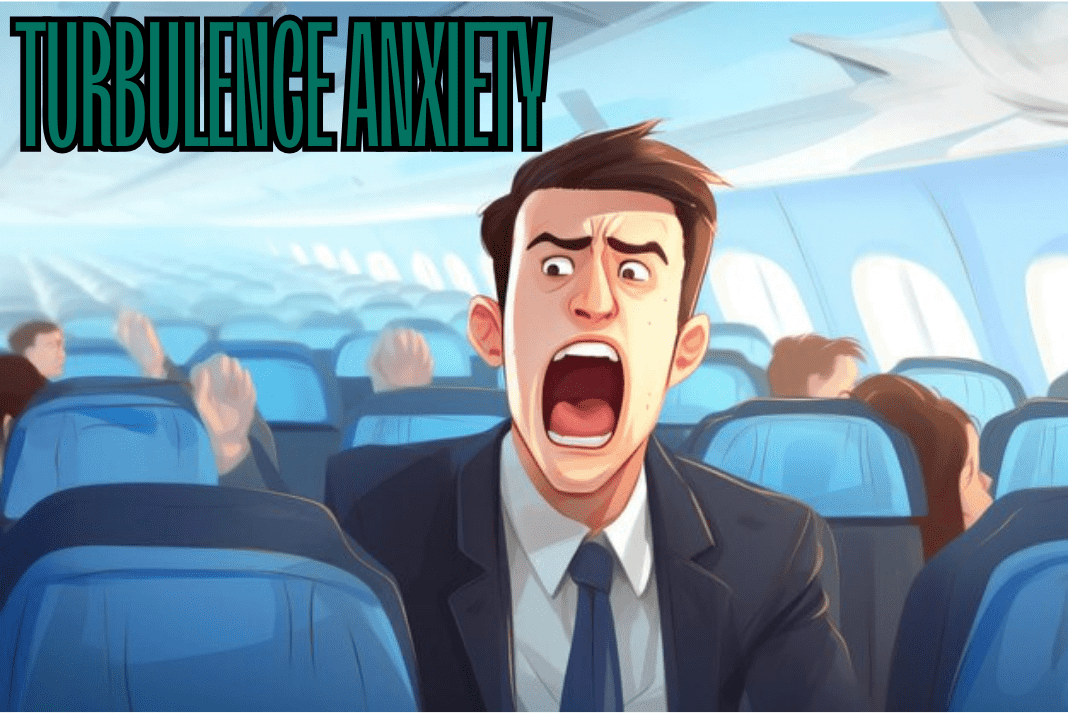Flying can be exciting but some people feel anxiety during turbulence. Turbulence anxiety is a common feeling for nervous flyers. Turbulence is a normal part of anxiety trigger for those who have anxiety in common. but there are ways to manage it.
People who have a fear of flying feel anxious while air travel. How to deal with turbulence anxiety? Though it is a very disturbing experience, there are some methods and techniques to overcome turbulence anxiety. It can include practicing relaxation techniques, breathing exercises, talking to the flight crew, or diverting your attention. This article will help guide you about these techniques that will help you remove your fear of turbulence and buckle your next flight.
Table of Contents
What is Turbulence Anxiety?
Turbulence anxiety is the fear or stress people feel when a plane shakes or moves unexpectedly during a flight. Turbulence is a common part of flight anxiety and often comes from not understanding what causes turbulence. Different types of turbulence anxiety include panic during turbulence, feeling disturbed by irregular air currents, and feeling anxious in overall aviation.
Modern aircraft are designed to withstand rough air currents, so travelers feel more at ease. Flight attendants are trained to keep people calm. However, there are also techniques to cope with turbulence anxiety and have a relaxing flying experience.
How can I Stop my Fear of Flying?
To stop your flying or manage anxiety, it’s vital to first understand what makes you anxious. Once you recognize the trigger, you may use special techniques to calm yourself and reduce anxiety. Deep breathing and rest activities help calm your anxious thoughts during flight. Learning more about aviation and the airline you’re traveling with can help reduce your anxiety or panic attacks.
Distraction is another beneficial tool—studying an e-book, paying attention to the journey, or seeing a movie can avoid thinking of flying. Using exposure therapy, like taking short flights can help build confidence over the years. Some people take too many flights just to overcome their fear of flying and manage flight anxiety effectively.
How to Deal with Turbulence Anxiety? 6 Tips
Turbulence anxiety is a normal part of flying but some people may avoid air travel due to turbulence anxiety. It is important to understand the nature of turbulence and that the flight crew is trained to handle turbulence problems. Here are some practical tips for dealing with severe turbulence anxiety and remaining calm on your next flight.
Practice meditation and deep breathing
Using meditation and breathing exercises helps you stay calm during flight. Meditation helps to relax your body and mind. Practice deep breathing exercises like the 4-7-8 method to manage your anxiety and experience turbulence regularly.
Find distractions
Find distractions to manage your fear when flying. Fasten your seatbelt and notice other things when the plane alleviates. Watching a movie, listening to music, or reading a book can help you distract yourself from the thought that the plane may crash. Engaging in activities you enjoy is the best way to feel more prepared and enjoy flying.
Get an ice pack
Get an ice pack when you feel anxious. Place it on your wrists or neck to create a cooling effect, while focusing on your breathing. It can calm your mind from negative thoughts and help you feel safe and comfortable.
Talk to a flight attendant
If you’re stressed that the staff is not well-trained and caused a plane crash, talk to a flight attendant. They will help you understand the safety and comfort of passengers are the priority of pilots and flight attendants. Planes are designed to control rough air turbulence. Getting reassurance from the turbulent staff can help you manage anxiety.
Pay attention to announcements
Listening to the pilot’s or flight crew’s announcements can ease anxiety during flights. They often provide updates about expected turbulence, when turbulence strikes, why turbulence occurs, and how they control turbulence effectively. This can help you gain confidence in the safety and your turbulence anxiety reduces.
Ask for a seat change
Where you sit matters. If turbulence bothers you, ask for a seat over the wings, where movement is less noticeable. Keep your mind calm during the flight by talking to your mind. Do not think of negative scenarios.
Conclusion
Turbulence anxiety is a common fear many people feel while air traveling. You can easily use these simple tips to help reduce turbulence anxiety during flights. If you feel anxious before the flight, or it’s your first time, try to seek professional help. Talk about your fears and triggers, so they can give you more effective techniques to reduce your fears and enjoy your next flight.
Hi, I’m Sophia! Welcome to my blog Try Stress Management (trystressmanagement.com), where I share simple, down-to-earth ways to handle stress and bring more calm into everyday life. Think of me as your friendly guide, offering practical tips, reflections, and little reminders that we’re all figuring this out together.
When I’m not blogging, you’ll usually find me with a good book, sipping tea, or exploring new walking trails. I believe small changes can make a big difference—and that a calmer, happier life is possible for everyone.
